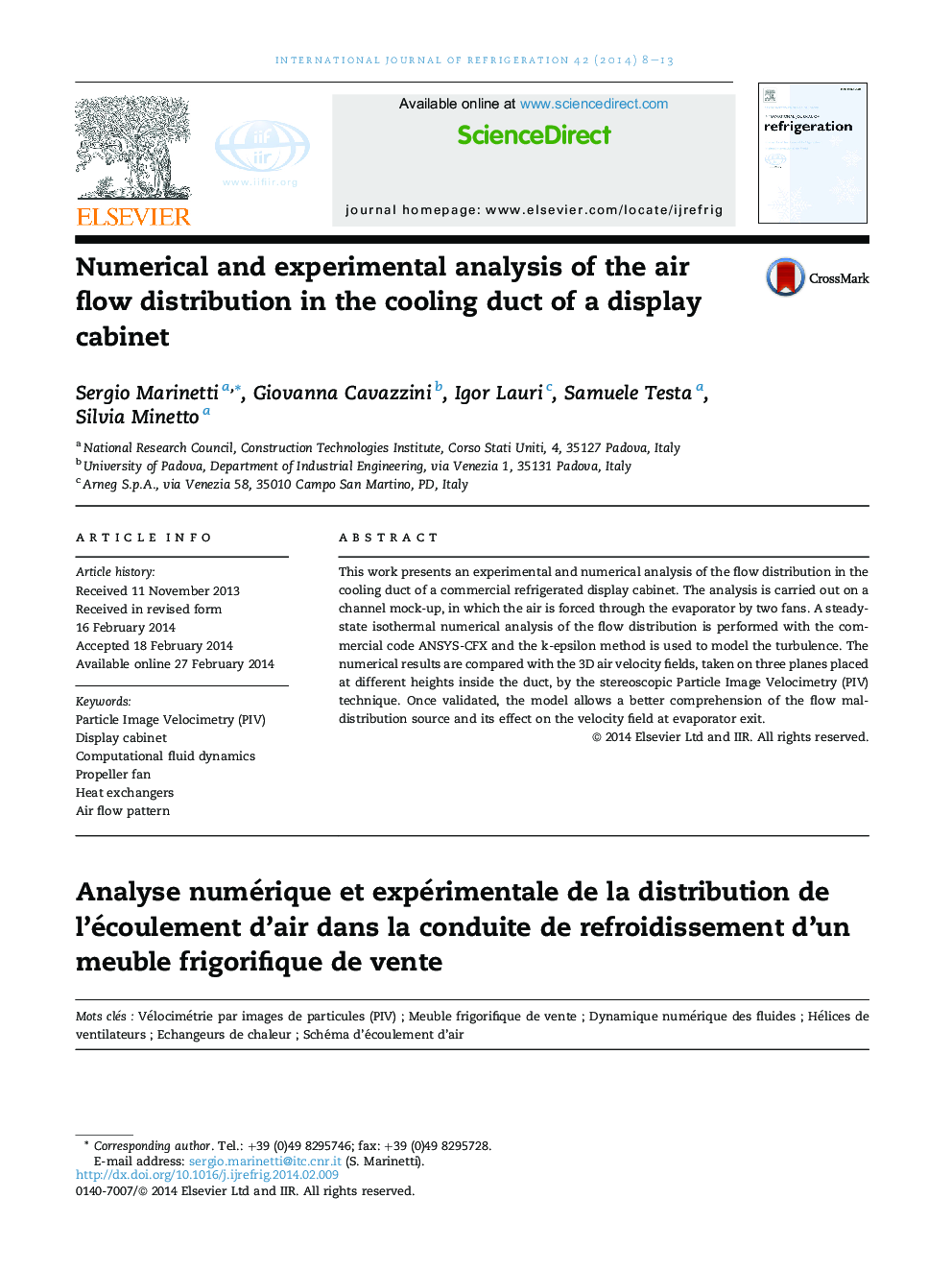| Article ID | Journal | Published Year | Pages | File Type |
|---|---|---|---|---|
| 790160 | International Journal of Refrigeration | 2014 | 6 Pages |
•3D air speed distribution is analysed inside a cooling duct of a display cabinet.•Air velocity is measured by Stereoscopic PIV technique.•Experimental data are used to validate a CFD model.•It is shown that experimentally determined boundary conditions are essential.
This work presents an experimental and numerical analysis of the flow distribution in the cooling duct of a commercial refrigerated display cabinet. The analysis is carried out on a channel mock-up, in which the air is forced through the evaporator by two fans. A steady-state isothermal numerical analysis of the flow distribution is performed with the commercial code ANSYS-CFX and the k-epsilon method is used to model the turbulence. The numerical results are compared with the 3D air velocity fields, taken on three planes placed at different heights inside the duct, by the stereoscopic Particle Image Velocimetry (PIV) technique. Once validated, the model allows a better comprehension of the flow mal-distribution source and its effect on the velocity field at evaporator exit.
